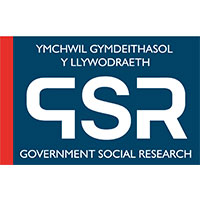An investigation of the scale and character of changes to Welsh language place names, and the reasons behind them.
This is the latest release
The research aimed to identify where, how and why changes to place names are taking place in Wales, how many names are changing or have recently changed, and the nature of these changes.
The broad themes identified in this research emphasise the complexity of place names and changing place names. This complexity becomes apparent in the tension between valuing place names of perceived significance and the ‘loss’ of these names through the adoption of new names that could in turn be considered significant, resulting from a combination of historical, linguistic, social and other factors that shape people’s perceptions of the significance of place names.
Local authority (LA) data shows that between 2018 and 2023, LAs received three times more applications for Welsh language street names (338 applications) than for English language street names (95 applications).
A greater number of applications were received by LAs for naming properties with Welsh language names (1,444) than English language names (1,125).
Most property renaming applications submitted to LAs did not result in a change of language. Where an application did result in a language change, it was three times more likely to be from English to Welsh then the other way round.
Alias naming - the addition of a property or business name to an existing named or numbered address - leads to an even more pronounced trend of name changes from English to Welsh language names. Changes to residential property names tended to lead to more Welsh language names than changes to business property names. Business names tended to involve changing an English language name to another English language name.
Data from AddressBase Premium showed that most changes to property names occurred between 2009 and 2014 and did not tend to involve a change in the language of the property name. Where the change to a property name involved a change in language, it tended to involve a change from an English language property name to a Welsh language property name. Changes to property names in Gwynedd were even more likely to involve changing an English language property name to a Welsh language property name compared to the other localities that were researched.
A digital house names survey found that having a house name in the Welsh language evokes a sense of pride, place or nostalgia for many residents. There is very little in the data which says the same about English language house names.
Linguistic landscape surveys carried out in seven locations across Wales found that the proportion of properties with Welsh language names varied across localities, with over 60% of named properties surveyed in Abersoch, Llanberis and Llanidloes having Welsh language names. In Cei Connah/Connah’s Quay, Welsh property names tended to be associated with more rural areas outside of the town, whilst in Yr Eglwys Newydd/Whitchurch (Caerdydd/Cardiff) there was a perception that the migration of Welsh speakers to the area was leading to houses being given Welsh language names.
Interviews in the seven localities revealed that motivations for naming or renaming a property included personal connections, desire for a Welsh language name, local geographic connections or historical connections. In the more urban localities of Y Fenni/Abergavenny, Cei Connah/Connah’s Quay and Yr Eglwys Newydd/Whitchurch, interviewees noted the increasing prevalence of Welsh language street names and signage.
Reports

Place name changes in Wales: research on current trends , file type: PDF, file size: 4 MB
Contact
Ceri Thomas
Email: cadw.research@gov.wales
Rydym yn croesawu gohebiaeth yn Gymraeg / We welcome correspondence in Welsh.

